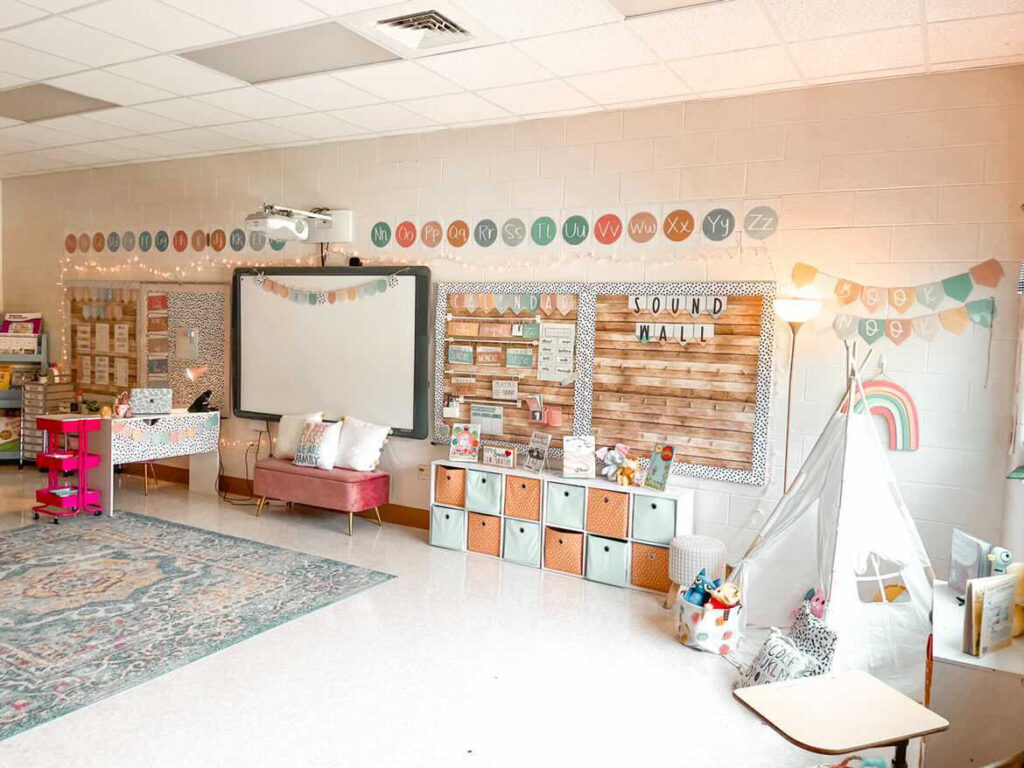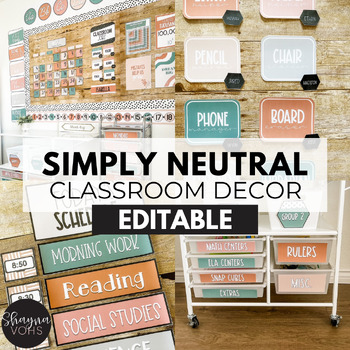In today’s bustling world, classrooms can often become overwhelmed with color and chaos. However, creating a calming environment is essential for promoting focus, creativity, and emotional well-being. As an educator who has experimented with various classroom setups, I’ve found that neutral calming classroom decor not only uplifts the atmosphere but also enhances student learning. In this comprehensive guide, we’ll delve into the significance of neutral decor, practical tips for implementation, and my personal experiences in the classroom.
The Importance of a Calm Learning Environment
Research shows that the classroom environment significantly impacts student behavior, concentration, and performance. A neutral calming space fosters tranquility, allowing students to engage better with their learning materials. Let’s explore some key benefits:
- Enhanced Focus: Neutral colors reduce visual distractions, helping students concentrate on their lessons.
- Emotional Stability: A calm environment lowers anxiety levels, promoting emotional well-being among students.
- Inclusivity: Neutral tones can cater to diverse preferences and create an inclusive atmosphere.

Understanding Neutral Colors
Neutral colors are tones that are not dominant in a color wheel. They usually include shades of white, beige, gray, and taupe. These colors play a crucial role in designing a calming classroom environment.

Characteristics of Neutral Colors
- They create a cohesive and harmonious look.
- Neutral colors are versatile and can easily complement other decorative elements.
- These colors are timeless and can suit any educational setting.

Popular Neutral Shades for Classrooms
| Color | Hex Code | Psychological Impact |
|---|---|---|
| Soft White | #F5F5F5 | Promotes clarity and purity. |
| Beige | #F5F0E1 | Creates warmth and comfort. |
| Light Gray | #D3D3D3 | Encourages reflection and neutrality. |
| Warm Taupe | #D8CFC4 | Instills calmness and balance. |

Designing Your Neutral Classroom
Transforming your classroom with neutral decor can be a rewarding process. Here’s how to get started:

Choosing the Right Materials
When selecting materials for your classroom, consider using natural elements. Wood, stone, and plant materials offer a calming aesthetic and enhance the overall ambiance. Here’s a quick overview:

- Wood: Use wooden furniture or decor to bring warmth and a natural element into the classroom.
- Plants: Incorporate greenery to purify the air and introduce life into the space.
- Textiles: Soft fabrics like cotton and linen can add texture and warmth without overwhelming colors.
Decorative Elements
Once you’ve chosen your materials, consider adding decorative elements that complement the neutral theme. Here are some ideas:
- Wall Art: Choose minimalist artworks that align with your neutral palette.
- Rugs: A soft area rug in a neutral color can create a cozy reading corner.
- Soft Furnishings: Cushions and blankets in muted tones enhance comfort and relaxation.
Balancing Color and Décor
While neutral colors serve as a base, it’s essential to balance them with splashes of color. Incorporate small, colorful elements that can stimulate creativity without overwhelming the senses:
- Accent pillows on reading nooks.
- Colorful storage bins for organization.
- Art supplies that offer bursts of color.
Practical Implementation Tips
Here are some practical steps for implementing neutral calming classroom decor effectively:
1. Color Scheme Planning
Start by selecting a primary neutral color for your walls, then choose 2-3 accent colors for furnishings and decor. Create a mood board to visualize how the colors will work together.
2. Gradual Changes
Consider making changes gradually. Start with larger items like furniture, then introduce smaller decor pieces over time. This approach allows you to evaluate what works best.
3. Involve Students
Engage your students in the decor process! Allow them to contribute ideas for a neutral theme or select art pieces for the classroom. This fosters a sense of ownership and community.
Pros and Cons of Neutral Classroom Decor
Like any design strategy, neutral classroom decor comes with its own set of advantages and challenges. Here’s a breakdown:
| Pros | Cons |
|---|---|
| Promotes focus and calmness. | May feel too plain if not accessorized well. |
| Creates an inclusive atmosphere. | Requires careful balance with color to avoid monotony. |
| Enhances emotional well-being. | Can demand more thoughtful design considerations. |
Personal Experience with Neutral Decor
In my experience, transforming my classroom with neutral calming decor made a remarkable difference. Initially painted in bright colors, the space was visually overwhelming, leading to distractions. When I switched to soft beige walls and added warm wooden tables, I observed a notable increase in student engagement and a decrease in behavioral issues.
Incorporating Technology and Learning Tools
Modern classrooms often involve technology, and integrating it into your neutral decor can enhance the learning experience:
Digital Displays
Use digital displays to showcase student work or educational materials without overwhelming the decor. Opt for screens that can blend with the neutral color scheme.
Technical Equipment
Ensure that equipment like projectors and computers is housed in neutral-colored cabinets. This prevents them from becoming visual distractions in the classroom.
Maintaining Your Neutral Classroom Decor
Once you’ve established your calming classroom decor, maintenance is key:
Regular Updates
Consider seasonal updates to keep the environment fresh and engaging. Swap out decor pieces or add new plants to maintain interest.
Student Responsibility
Involve students in maintaining a tidy and organized classroom. Encouraging them to care for the space fosters respect and responsibility.
Frequently Asked Questions (FAQs)
What are the best neutral colors for a classroom?
The best neutral colors include soft whites, grays, beiges, and taupes. These shades promote a calming atmosphere and are widely accepted in educational settings.
How can I add color to a neutral classroom?
Incorporate colorful accessories such as art supplies, cushions, and storage bins. These elements can add personality without overwhelming the neutral base.
Can neutral decor work in diverse classrooms?
Absolutely! Neutral decor is versatile and can cater to a broad range of preferences, making it suitable for inclusive and diverse classrooms.
How do I select decor that aligns with neutral themes?
When selecting decor, aim for minimalist designs in muted tones that complement your primary color scheme. Look for natural materials and textures that add depth to the space.
Is it possible for neutral decor to be engaging for students?
Yes! Engaging decor can be achieved through interactive elements like student artwork, soft seating areas, and educational displays that bring the space to life.
Conclusion
Neutral calming classroom decor has the power to transform the educational atmosphere into one that promotes focus, inclusivity, and emotional well-being. By carefully selecting neutral colors and materials, balancing accents, and maintaining the space, you can create a serene environment that enhances learning. I encourage you to embark on this journey of transformation and witness the positive impact it can have on both you and your students.